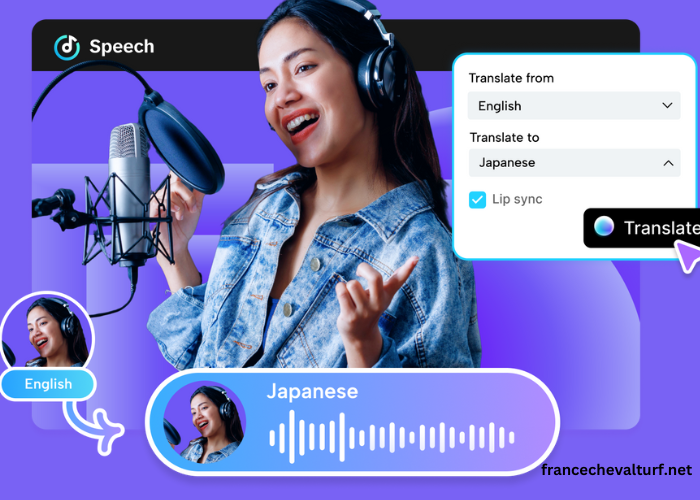In today’s digital world, video content is one of the most powerful tools for communication, education, and entertainment. With the internet-breaking geographical barriers, content creators, businesses, and educators strive to reach audiences worldwide. However, language remains a significant hurdle in making content universally accessible. This is where online video translation and AI dubbing come into play. These advanced technologies help bridge language gaps, making videos more inclusive and impactful.
Understanding Online Video Translation
Online video translators involves converting spoken or written language in a video into another language, either through subtitles or voiceover. This process helps non-native speakers understand the content, broadening the video’s reach. Traditional translation methods required professional linguists and editors, which was time-consuming and expensive. However, with advancements in artificial intelligence and machine learning, video translation has become more efficient, accurate, and scalable.
How Online Video Translation Works
Online video translation typically involves the following steps:
- Transcription—The spoken content in a video is converted into text.
- Transcription: The transcribed text is translated into the target language.
- Subtitling or Voiceover—The translated text is either displayed as subtitles or used for voice dubbing.
AI-powered tools can automate these steps, making the process faster while maintaining high levels of accuracy.
Benefits of Online Video Translation
- Global Reach—By translating videos into multiple languages, content creators can target audiences beyond their native language speakers.
- Enhanced Accessibility—Viewers who are deaf or hard of hearing can benefit from translated subtitles.
- SEO Optimization—Translated transcripts improve search engine visibility, making videos rank higher in international markets.
- Cost-Effective—Automated tools reduce the need for professional translators, lowering costs without compromising quality.
The Role of AI in Dubbing
AI dubbing is an advanced form of video translation where artificial intelligence generates voiceovers in different languages. This allows viewers to listen to content in their native language without needing subtitles. AI dubbing uses deep learning and natural language processing (NLP) to create realistic, human-like voices, making the translated audio feel more natural.
How AI Dubbing Works
- Speech Recognition—AI extracts spoken words from a video and converts them into text.
- Language Translation—The extracted text is translated into the desired language.
- Voice Synthesis—AI-generated voices dub the translated content, matching the speaker’s tone, pitch, and pace.
Advantages of AI Dubbing
- Time Efficiency—AI can dub entire videos in minutes, unlike traditional dubbing, which can take weeks.
- Natural-Sounding Voices—Advanced AI models mimic human intonation, making the dubbed content more engaging.
- Scalability—AI dubbing allows content creators to translate videos into multiple languages simultaneously.
- Cost Savings—Automating dubbing reduces the need for expensive voice actors and studio time.
Applications of Online Video Translation & AI Dubbing
These technologies are revolutionizing various industries, making content more accessible and effective worldwide.
1. Entertainment Industry
Streaming platforms like Netflix, YouTube, and Amazon Prime use AI-driven translations and dubbing to cater to international audiences. Viewers can watch movies and shows in their preferred language without relying solely on subtitles.
2. Education & E-Learning
Online courses and educational videos benefit significantly from AI translation and dubbing. Students worldwide can access high-quality learning materials in their native languages, improving comprehension and engagement.
3. Corporate Training & Business Communication
Global companies use video translation to provide multilingual training sessions, making content accessible to employees across different regions.
4. Marketing & Advertising
Businesses leverage AI dubbing and translation to localize promotional videos, ensuring their message resonates with audiences from diverse linguistic backgrounds.
5. Social Media & Content Creation
Influencers and content creators use these technologies to expand their reach globally. AI-powered tools allow them to repurpose content for international audiences effortlessly.
Challenges and Limitations
While online video translation and AI dubbing offer numerous advantages, they also come with certain challenges:
- Accuracy Concerns—AI translation may not always capture cultural nuances, leading to potential misinterpretations.
- Voice Quality—Although AI voices have improved, they may still sound robotic in some cases.
- Contextual Understanding—AI may struggle with humor, idioms, and context-specific meanings in different languages.
- Data Privacy Issues—Uploading sensitive content to cloud-based AI tools can pose security risks.
The Future of AI-Powered Video Translation & Dubbing
As artificial intelligence continues to evolve, the future of video translation and dubbing looks promising. Some potential advancements include:
- Improved Voice Realism—AI models will become even more lifelike, making dubbed voices indistinguishable from real human speech.
- Greater Language Support—AI will support a broader range of dialects and minority languages, increasing accessibility.
- Context-Aware Translation—Future AI models will better understand cultural and contextual meanings, improving translation accuracy.
- Integration with AR & VR—AI-driven translation and dubbing will enhance virtual reality experiences, making global interactions more seamless.
Conclusion
Online video translation and AI dubbing are transforming how we consume and share content across borders. These technologies break down language barriers, making information, entertainment, and education accessible to a global audience. While challenges remain, ongoing advancements in AI are making video translation and dubbing more accurate, efficient, and human-like. As the demand for multilingual content continues to rise, AI-powered solutions will play a crucial role in shaping the future of digital communication.




